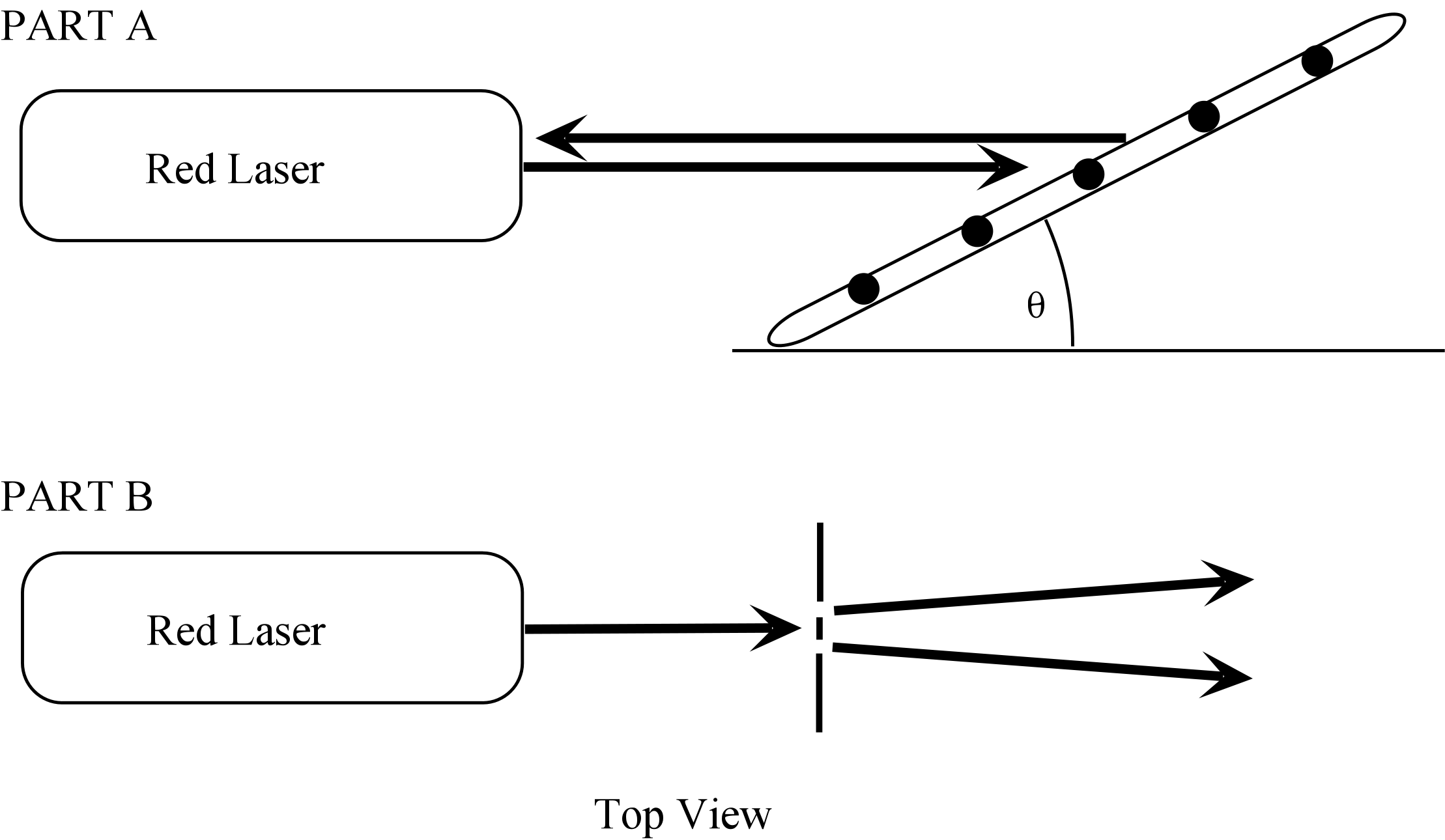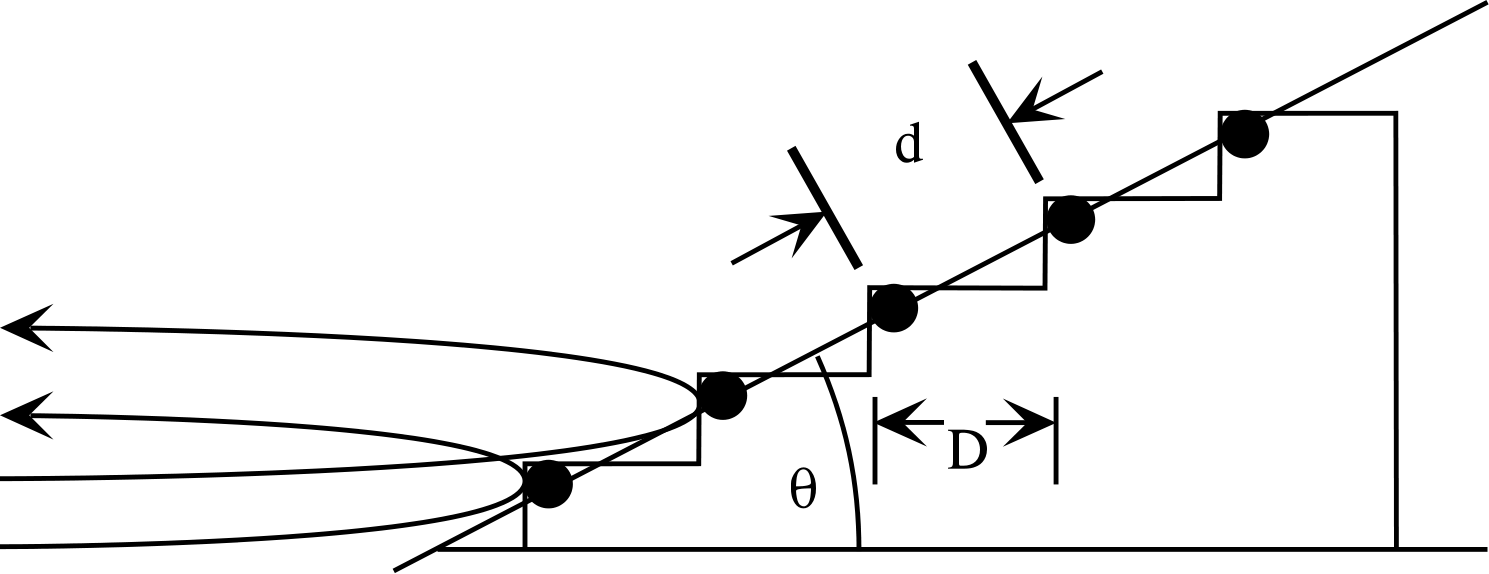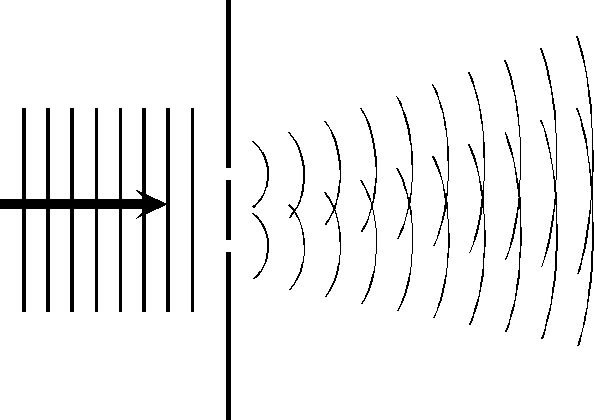Laboratory #10: Interference of Light
Objective:
Using interference of light you will be able to measure the wavelength of visible light and the very small separation of two slits. In the first experiment, you will use a grating, which is a piece of thin plastic with tiny lines inscribed on it. The lines are so small that you cannot see them directly. As you will see below, the grating acts as a series of steps which can produce constructive and destructive interference. In the second experiment, you will generate two waves by passing one beam of light through a mask with two very narrow slits separated by an unknown amount. Each slit acts like a source of light, giving two light waves. By measuring the spacing of the maxima in the interference pattern, you can then determine the slit separation.
Equipment:
- Helium-neon laser.
- Grating.
- Masks with double slits.
- Screen.
- Ruler and protractor.
Diagram:

Instructions for PART A:
- Turn on the laser - BE CAREFUL! Although the laser cannot permanently damage your eye, staring into it or shining it at someone else can be annoying and painful.
- First, rotate the grating so that the beam reflects straight off the surface and goes straight back to the laser. Check that the angle indicator reads 90°
.
- You will notice additional spots on either side of the main reflection. Now, rotate the grating until the first spot on one side goes straight back to the laser and record the new angle of the grating. Keep going until you have recorded as many spots as you can.
Instructions for PART B:
- Place the double slit mask into the beam and make sure both slits are illuminated.
- Place the screen some distance away from the double slit mask and record this distance.
- Measure the distance between the maxima or the minima in the interference pattern. To get a more accurate measurement, find the distance across many maxima or minima and divide the result by one minus the number of maxima or minima.
- Repeat 3) and 4) for two more distances.
DATA:
PART A
|
Spot number |
1 |
2 |
3 |
4 |
5 |
|
Angle |
|
|
|
|
|
|
Wavelength |
|
|
|
|
|
PART B
|
Distance [cm] |
|
|
|
|
Wavelength [nm] |
|
|
|
|
Spacing [mm] |
|
|
|
|
Slit separation [um] |
|
|
|
Analysis for PART A:
- Why do we get a series of bright spots reflected off of the grating?
- For reflection off of steps, constructive interference occurs when n×
l
= 2D, where D is the width of each step. Gratings act very much like steps, except that the width of the step is given by D = d×
cos(q
). So, for each spot, you found q
. From this, you can find D and then l
. The value of n you use is given by the spot number that you are calculating.
- When you have values for l
for each spot, find the average.

Analysis for PART B
- Using the formula for the separation of the maxima or minima, y = lL/D, where D is the separation of the slits and L is the distance to the screen, calculate the spacing of the slits, using the wavelength of the light found in PART A.
- Average the results from 1) together and compare to the known value.




